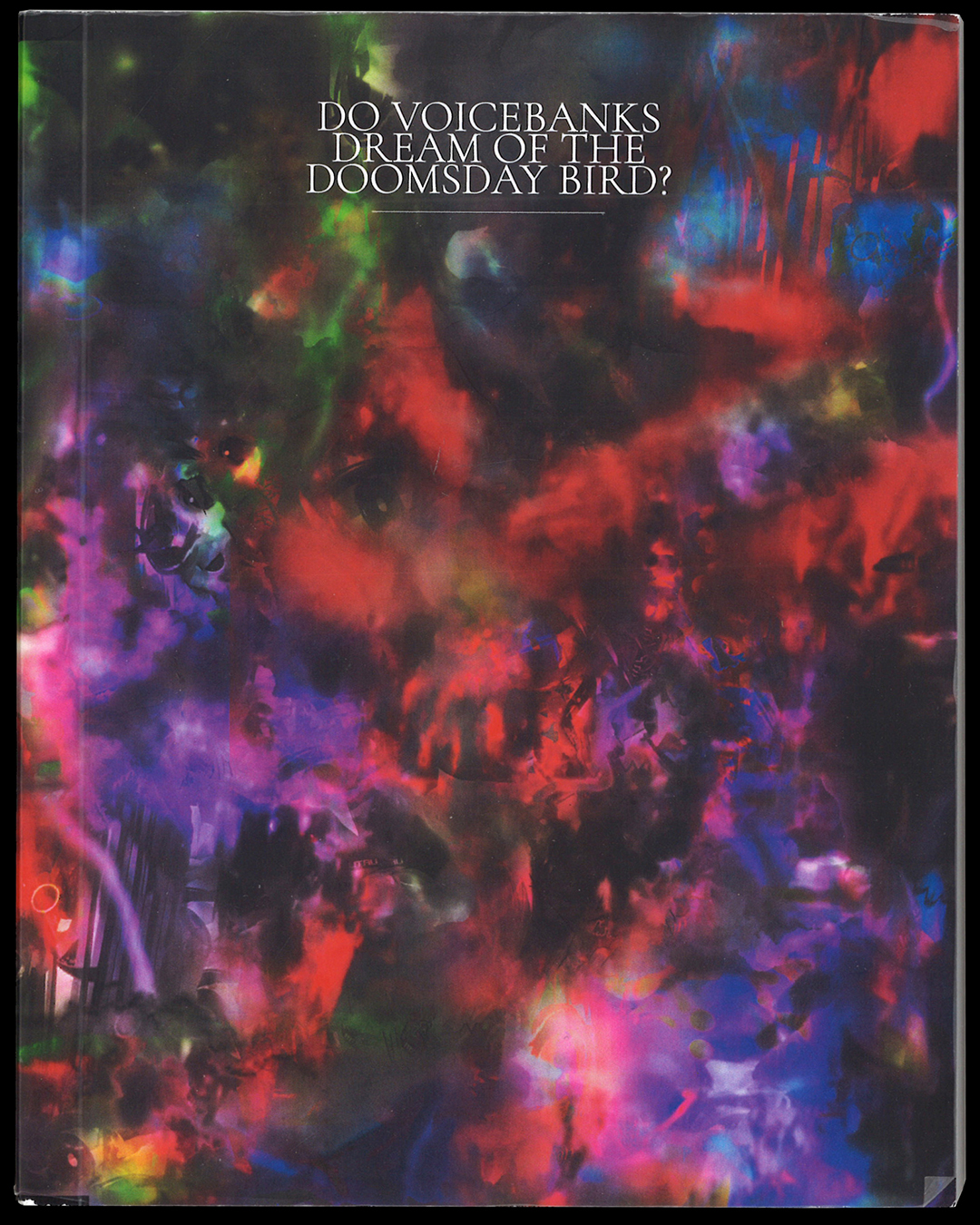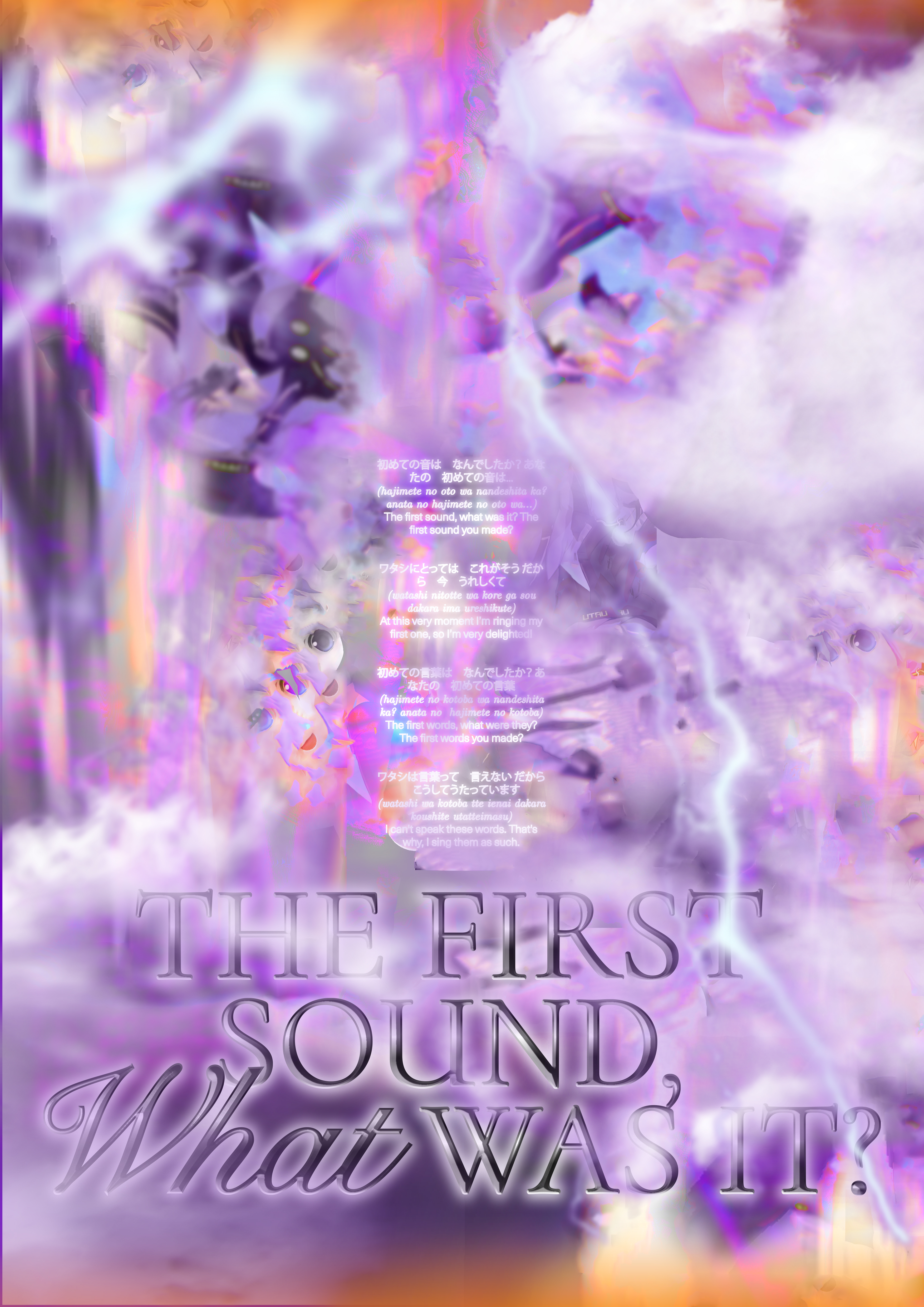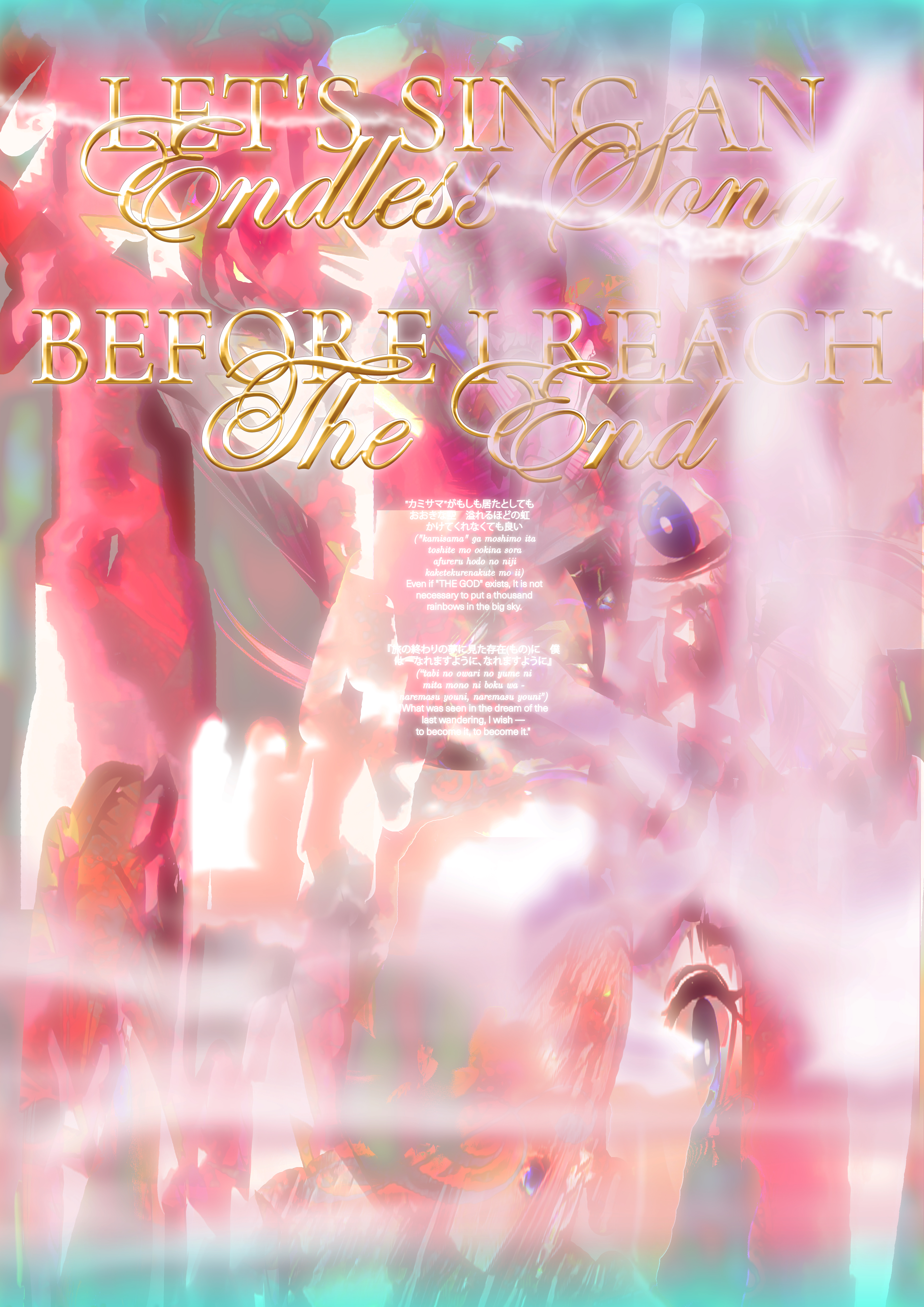Do Voicebanks Dream of the Doomsday Bird?
Sound Art Post-graduation thesis book, Installation [6 posters, sound piece (45’’)]
(Academic project)
Do Voicebanks Dream of the Doomsday Bird? dives into the sonic Japanese subculture of Vocaloid and UTAUloid. These two softwares allow their users to use artifical voices (called voicebanks) to sing any combination of lyrics and melody they write. Around these voicebanks, an entire subculture has risen, which has given them names, illustrated avatars, personalities, and even elevated some of them to superstar status, complete with live holographic concerts, merchandising and screaming fans.
The project presents a speculative exercise which aims to frame these voicebanks within the expanded ontological terrain of what it means to be human, within "revolutionary robotics:” To imagine how these virtual voices can also be capable of feeling, of dreaming and of fostering anxieties over their own lives and deaths. Beyond exploring "what a voicebank is," this work asks "what can a voicebank do.” Turns out that they can do quite a lot: aid in the subversion of gender and racial stereotypes by undoing the link between appearance and voice; foster transnational communities of radical resource sharing, grassroots cooperation and question copyright laws.
Printing: Digiset
Sound Art Post-graduation thesis book, Installation [6 posters, sound piece (45’’)]
(Academic project)
Do Voicebanks Dream of the Doomsday Bird? dives into the sonic Japanese subculture of Vocaloid and UTAUloid. These two softwares allow their users to use artifical voices (called voicebanks) to sing any combination of lyrics and melody they write. Around these voicebanks, an entire subculture has risen, which has given them names, illustrated avatars, personalities, and even elevated some of them to superstar status, complete with live holographic concerts, merchandising and screaming fans.
The project presents a speculative exercise which aims to frame these voicebanks within the expanded ontological terrain of what it means to be human, within "revolutionary robotics:” To imagine how these virtual voices can also be capable of feeling, of dreaming and of fostering anxieties over their own lives and deaths. Beyond exploring "what a voicebank is," this work asks "what can a voicebank do.” Turns out that they can do quite a lot: aid in the subversion of gender and racial stereotypes by undoing the link between appearance and voice; foster transnational communities of radical resource sharing, grassroots cooperation and question copyright laws.
Printing: Digiset
2020
![]()










